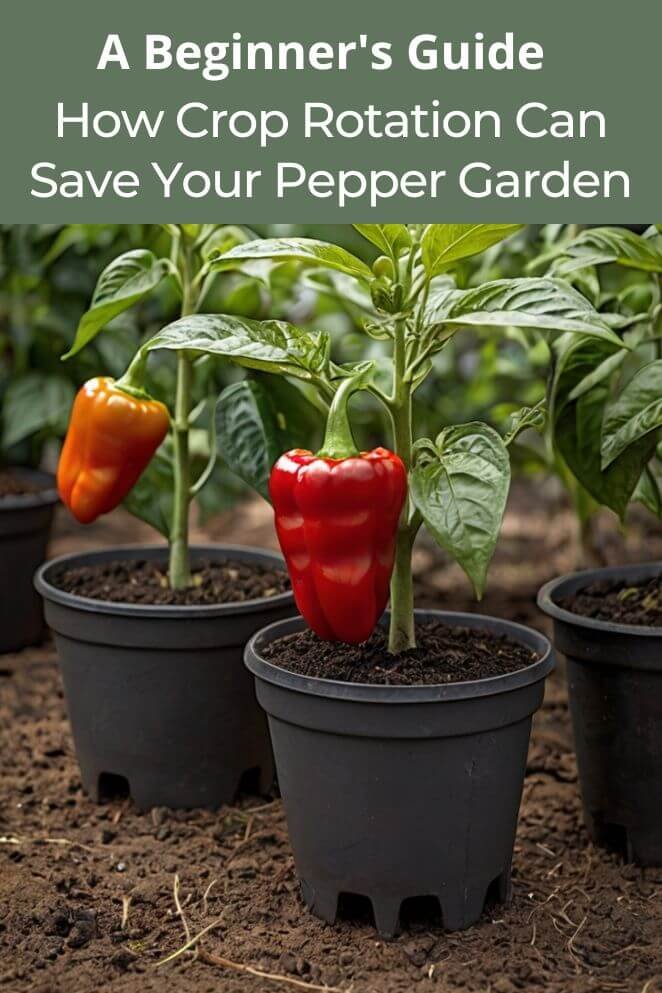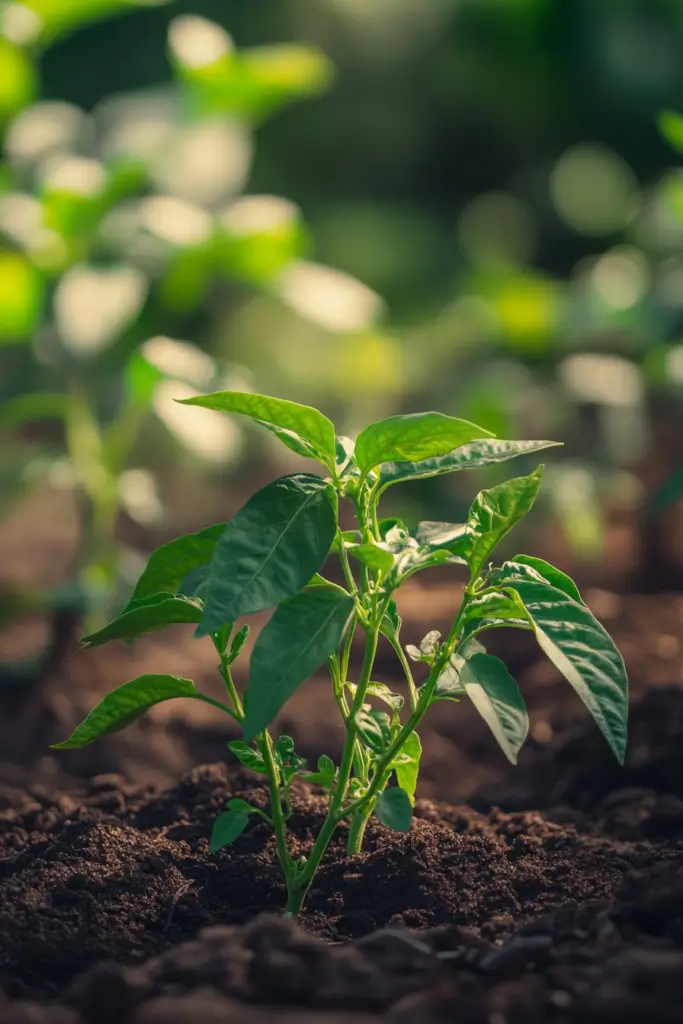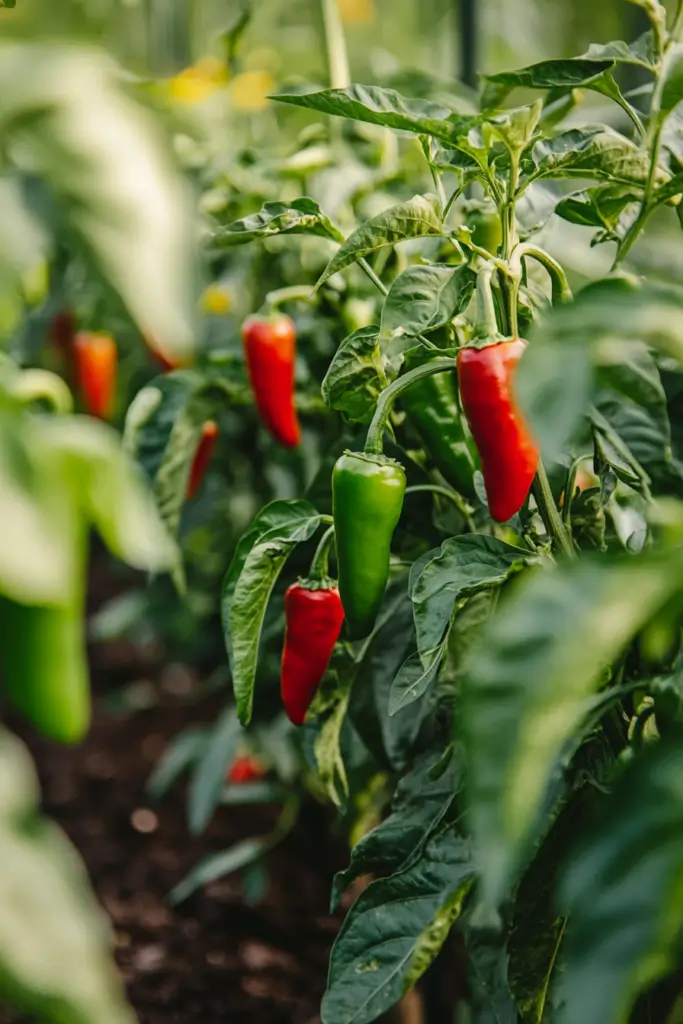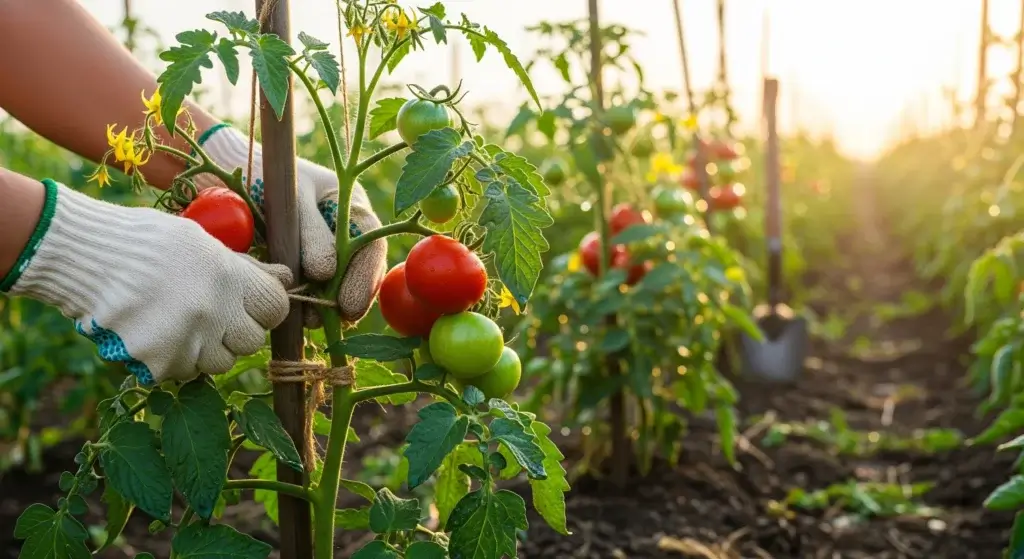
Have you ever had a season where your pepper plants just didn’t thrive?
Maybe they wilted unexpectedly, or pests seemed to take over.
If you’ve been facing these struggles, you might be overlooking a simple but powerful gardening technique: crop rotation.
This age-old practice can breathe new life into your pepper garden, helping you grow healthier plants and enjoy better harvests.
What is Crop Rotation?
Crop rotation is the practice of changing the type of crops you grow in a particular spot each season.
Instead of planting peppers in the same place year after year, you rotate them with other types of plants.
This system prevents soil from becoming exhausted and reduces the risk of pests and diseases.
By giving your garden a break from the same plant family, you allow the soil to recover and stay nutrient-rich.
For example, if you grow peppers in one bed this year, you might plant beans in that spot next year and leafy greens the year after.
Then, after a few seasons, you return to peppers.
This rotation keeps your garden healthy and productive.

Why Peppers Need Crop Rotation
Peppers are a part of the nightshade family, along with tomatoes, potatoes, and eggplants.
These plants are known to drain nutrients from the soil and attract pests and diseases over time.
Rotating your peppers is essential for several important reasons:
Prevents soil depletion
Peppers are heavy feeders, meaning they require a lot of nutrients, particularly nitrogen, potassium, and phosphorus.
When you grow peppers in the same spot every year, these nutrients get used up quickly.
Over time, this depletes the soil, making it less fertile.
Plants grown in nutrient-poor soil struggle to grow, producing smaller yields and weaker plants.
Crop rotation helps restore soil health by allowing different plants to use and replenish different nutrients.
For example, legumes like beans and peas fix nitrogen into the soil, improving fertility for future pepper crops.
Reduces pest problems
Peppers attract common garden pests such as aphids, spider mites, and cutworms.
These pests often lay eggs in the soil or leave larvae behind, waiting for the next crop to feed on.
If you keep planting peppers in the same place, these pests will find food easily, leading to infestations year after year.
Rotating your crops disrupts the pest lifecycle.
When pests emerge but find a different plant type in place of peppers, they often move elsewhere or die out, reducing future infestations.
Limits disease build-up
Peppers are vulnerable to soil-borne diseases like bacterial wilt, root rot, and fungal infections.
Once these diseases are in your soil, they can persist for years.
Planting peppers repeatedly in the same area creates a breeding ground for these pathogens, leading to higher chances of plant infections.
Crop rotation reduces disease risk by preventing pathogens from finding their preferred host each year.
Over time, these diseases naturally diminish in the absence of their target plants.
Improves plant growth and yield
Fresh soil conditions often lead to healthier peppers.
When soil is well-nourished and free from disease and pests, peppers can grow strong and produce more fruit.
Crop rotation helps maintain soil structure and encourages beneficial microbes, creating an ideal environment for peppers to flourish.
Balances soil nutrients
Different plants have varying nutrient needs.
While peppers require lots of nitrogen and potassium, root crops like carrots or beets demand less.
Rotating crops prevents one type of nutrient from being overused, while other nutrients remain untouched.
This balance results in richer soil that benefits all plants in your garden.

Planning Your Crop Rotation
Getting started with crop rotation can feel a bit overwhelming, but breaking it down into simple steps makes it manageable:
Step 1: Understanding the basic of crop rotation
Plant families: Peppers belong to the Solanaceae family, which includes tomatoes, eggplants, and potatoes. Avoid planting these crops in the same spot consecutively.
Plant families classification helps in understanding the similarities among plants, which can be beneficial for practices like crop rotation and pest management. Here is a table of plant family classifications:
| Plant family |
Examples of vegetables
|
| Amaryllidaceae (Onion) |
Garlic, Onion, Leek, Chives
|
| Brassicaceae (Mustard) |
Broccoli, Cabbage, Cauliflower, Kale, Radish, Turnip, Brussels Sprouts
|
| Chenopodiaceae (Goosefoot) |
Beetroot, Chard, Spinach
|
| Cucurbitaceae (Gourd) |
Cucumber, Pumpkin, Squash, Zucchini, Watermelon
|
| Fabaceae (Legume) |
Beans (all types), Peas, Lentils
|
| Solanaceae (Nightshade) |
Tomato, Potato, Eggplant, Bell Pepper
|
| Apiaceae (Carrot) |
Carrot, Celery, Parsley, Fennel
|
| Asteraceae (Sunflower) |
Lettuce, Artichoke
|
| Poaceae (Grass) | Corn |
| Morning Glory Family (Convolvulaceae) | sweet potato |
| Mallow Family (Malvaceae) | Okra |
Rotation cycle: Aim for a 3-4 year rotation plan to break pest and disease cycles and replenish soil nutrients.
Step 2: Map your garden
Sketch your garden beds and divide your garden into sections.
Step 3: Plan your rotation schedule
Create a simple rotation plan by assigning crops to each section over several years.
label where you plant each crop.
Here’s an example of a 4-year rotation plan:
- Year 1: Peppers
Plant peppers in Section A.
Peppers are heavy feeders and require nutrient-rich soil.
After harvest, add compost or organic matter to replenish nutrients.
- Year 2: Legumes (e.g., beans, peas)
Plant legumes in Section A.
Legumes fix nitrogen in the soil, replenishing the nutrients used by peppers.
They also help break up the soil with their root systems.
- Year 3: Leafy greens (e.g., lettuce, spinach, kale)
Plant leafy greens in Section A.
Leafy greens have shallow root systems and use different nutrients than peppers.
They help prevent soil erosion and add organic matter when harvested.
- Year 4: Root vegetables (e.g., carrots, beets, onions)
Plant root vegetables in Section A.
Root vegetables break up compacted soil and improve its structure.
They use nutrients from deeper soil layers, avoiding competition with peppers.
- Year 5: Return to Peppers
By this time, the soil will be rejuvenated, and pest/disease cycles will be broken.
The soil in Section A will have recovered its nutrients, and pest/disease cycles will be broken.
Don’t forget to be flexible, some years you might grow more peppers or fewer beans. That’s okay! Just try to keep the rotation moving forward.
Step 4: Choose complementary crops
When rotating peppers, select crops that:
- Improve soil health (e.g., legumes for nitrogen fixation).
- Have different nutrient needs than peppers.
- Are not in the Solanaceae family to avoid cross-contamination of diseases.
Step 5: Incorporate cover crops
During the off-season or between rotations, plant cover crops like clover, rye, or buckwheat.
Cover crops prevent soil erosion, suppress weeds, and add organic matter to the soil.
Step 6: Monitor soil health
Test your soil annually to check nutrient levels and pH.
Amend the soil with compost, manure, or organic fertilizers as needed.
Ensure proper drainage to prevent waterlogged soil, which can harm peppers.
Step 7: Keep the records
Maintain a garden journal to track what was planted where and when. Note any pest or disease issues to adjust your rotation plan accordingly.

How Crop Rotation Works for Peppers
So, how does this rotation work in practice? It’s simpler than you might think. Here’s a basic 4-year crop rotation plan to protect your peppers:
Year 1: Peppers
Section A: Plant peppers.
Sections B, C, D: Plant other crops like legumes, leafy greens, or root vegetables (see below for details).
Year 2: Legumes
Section A: Plant legumes (e.g., beans, peas).
Section B: Plant peppers.
Sections C, D: Rotate to other crops like leafy greens or root vegetables.
Year 3: Leafy Greens
Section A: Plant leafy greens (e.g., lettuce, spinach, kale).
Section B: Plant legumes.
Section C: Plant peppers.
Section D: Rotate to root vegetables.
Year 4: Root Vegetables
Section A: Plant root vegetables (e.g., carrots, beets, onions).
Section B: Plant leafy greens.
Section C: Plant legumes.
Section D: Plant peppers.
Year 5: Return to Peppers
By Year 5, rotate peppers back to Section A and repeat the cycle.
Sample Four-Year Rotation Layout
| Year | Section A | Section B | Section C | Section D |
| 1 | Peppers | Legumes | Leafy greens | Root vegetables |
| 2 | Legumes | Peppers | Root vegetables | Leafy greens |
| 3 | Leafy greens | Legumes | Peppers | Root vegetables |
| 4 | Root vegetables | Leafy greens | Legumes | Peppers |

Common Mistakes to Avoid
Even experienced gardeners can slip up when it comes to crop rotation.
Here are some common mistakes and how to avoid them:
- Ignoring plant families: It’s not just about rotating individual crops but also avoiding plants from the same family. If you replace peppers with tomatoes, you’re not rotating; you’re inviting the same problems.
- Too short rotation cycles: Moving peppers every other year isn’t always enough. Aim for a 3 to 4-year gap before returning to the same spot.
- Overlooking soil health: Crop rotation helps, but it’s not a substitute for enriching your soil with compost and organic matter.
- Planting without a plan: Randomly changing crops each year won’t offer the same benefits. A well-thought-out rotation plan is key.
- Neglecting records: Without records, it’s easy to forget what was planted where, leading to accidental repeats.
Conclusion
Crop rotation is a simple yet powerful tool that can save your pepper garden from common pitfalls.
By rotating your crops, you can prevent soil depletion, reduce pests and diseases, and encourage healthier plant growth.
Planning ahead and avoiding common mistakes will ensure your peppers thrive season after season.
Crop rotation is a smart practice that can make a big difference. Give it a try, and your pepper plants will thank you with a bountiful harvest.
FAQs
Even in small spaces, you can rotate plants in containers or raised beds. Switching soil or adding fresh compost can also help.
Yes, but it’s best to refresh the soil each year and avoid reusing soil from peppers for other nightshades.
While it helps a lot, crop rotation works best alongside good soil care, pest management, and proper watering.



